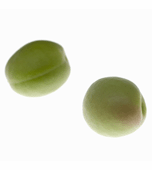|
|
|
| |
The origin of a plum is China and it is known
that the plums have begun to be grown about 3000
years ago. In Korea, ancestors used plums since
Samhan Era and the usage of plums were widely spreaded
nationwide in Samguk Era. People believe drifting
people of Gaya have introduced the culture of plums
with other cultures when Gaya has perished in the
middle of 6th century. Written in 7th century, the
book of ancestral history ¡°Manyeopjip¡± has about
110 parts about plums and it tells the introduction
of plums. Plum trees bloom 5?petaled flowers before
the leaves sprout. The fruit, plum, is a kind of
drupes that weighs 12~20g and ripe in June or July.
|
 |
|
 |
| In 1980, under the martial law, Mr. Kwon visited
Songgwang?Sa located in Seungju?Gun, Jeolla?Nam?Do
and found seeds of old endemic plums aged for about
500 years. He took the seeds to Daegu and fell in
love with them. And he came to have the belief that
these endemic plums could have a role for the health
of people, differently from improved breeds of plums.
He just planted the plums in the garden of his house
in Daemyeong?Dong. When he felt the garden of 1000
Pyeong (about 3308m^2) was small, he purchased a
land of 7000 Pyeong (about 23141m^2) in Daewang?Gol
of Palgong?Mountain in 1991. Since 1992 he began
to breed the endemic plums. Before planting and
breeding, he verified that citric acids in plums
promotes metabolism in body and cleans waste materials
in blood vessels through studies in 1986. He named
this endemic plum as ¡°Songgwang Seoljungmae¡± and
registered as a trademark. |
|
| |
|
|
|
|
|